Elemental bioimaging shows mercury and other toxic metals in normal breast tissue and in breast cancers
- PMID: 32004334
- PMCID: PMC6993973
- DOI: 10.1371/journal.pone.0228226
Elemental bioimaging shows mercury and other toxic metals in normal breast tissue and in breast cancers
Abstract
Objective: Exposure to toxic metals such as mercury has been proposed to be a risk factor for the development of breast cancer since some metals can promote genetic mutations and epigenetic changes. We sought to find what toxic metals are present in normal breast tissue and in the tumours of women who had mastectomies for invasive ductal breast carcinoma.
Materials and methods: Formalin-fixed paraffin-embedded blocks from mastectomies for breast carcinoma were examined from 50 women aged 34-69 years. Paraffin blocks selected for elemental analysis were from breast tissue not involved by carcinoma and from the carcinoma itself. Seven micrometer-thick sections were stained with autometallography to demonstrate the presence of mercury, and subjected to laser ablation-inductively coupled plasma-mass spectrometry (LA-ICP-MS) to confirm the presence of mercury and to detect other toxic metals.
Results: Autometallography-detected mercury was seen in intraductal secretions and some luminal epithelial cells of normal breast lobules in 26 (55%) of the 47 samples where lobules were present, and in 10 (23%) of carcinomas from the 44 samples where carcinoma was present. In eight samples ductal carcinoma in situ was present and one of these contained mercury. LA-ICP-MS confirmed the presence of mercury in samples that stained with autometallography, and detected lead, iron, nickel, aluminium, chromium and cadmium in some samples.
Conclusions: Mercury was present in normal breast lobules in more than half of mastectomy samples that contained an invasive carcinoma, and in a smaller proportion of carcinomas and ductal carcinomas in situ. Other toxic metals that may interact synergistically with mercury could be detected in some samples. These findings do not provide direct evidence that toxic metals such as mercury play a role in the pathogenesis of breast cancer, but suggest that future molecular biological investigations on the role of toxic metals in breast cancer are warranted.
Conflict of interest statement
The authors have declared that no competing interests exist.
Figures
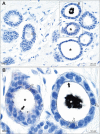

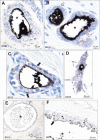
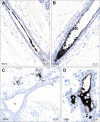
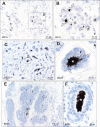
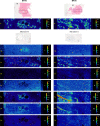
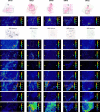
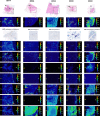

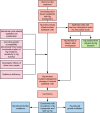
Similar articles
-
Mercury in the human thyroid gland: Potential implications for thyroid cancer, autoimmune thyroiditis, and hypothyroidism.PLoS One. 2021 Feb 9;16(2):e0246748. doi: 10.1371/journal.pone.0246748. eCollection 2021. PLoS One. 2021. PMID: 33561145 Free PMC article.
-
Mercury in Pancreatic Cells of People with and without Pancreatic Cancer.Int J Environ Res Public Health. 2020 Dec 2;17(23):8990. doi: 10.3390/ijerph17238990. Int J Environ Res Public Health. 2020. PMID: 33276658 Free PMC article.
-
Age-related accumulation of toxic metals in the human locus ceruleus.PLoS One. 2018 Sep 19;13(9):e0203627. doi: 10.1371/journal.pone.0203627. eCollection 2018. PLoS One. 2018. PMID: 30231068 Free PMC article.
-
Bioimaging of metals by laser ablation inductively coupled plasma mass spectrometry (LA-ICP-MS).Mass Spectrom Rev. 2010 Jan-Feb;29(1):156-75. doi: 10.1002/mas.20239. Mass Spectrom Rev. 2010. PMID: 19557838 Review.
-
Strategies for the engineered phytoremediation of toxic element pollution: mercury and arsenic.J Ind Microbiol Biotechnol. 2005 Dec;32(11-12):502-13. doi: 10.1007/s10295-005-0255-9. Epub 2005 Jul 2. J Ind Microbiol Biotechnol. 2005. PMID: 15995854 Review.
Cited by
-
Mercury in the human thyroid gland: Potential implications for thyroid cancer, autoimmune thyroiditis, and hypothyroidism.PLoS One. 2021 Feb 9;16(2):e0246748. doi: 10.1371/journal.pone.0246748. eCollection 2021. PLoS One. 2021. PMID: 33561145 Free PMC article.
-
Role of Antioxidant Vitamins and Other Micronutrients on Regulations of Specific Genes and Signaling Pathways in the Prevention and Treatment of Cancer.Int J Mol Sci. 2023 Mar 23;24(7):6092. doi: 10.3390/ijms24076092. Int J Mol Sci. 2023. PMID: 37047063 Free PMC article. Review.
-
The distribution of toxic metals in the human retina and optic nerve head: Implications for age-related macular degeneration.PLoS One. 2020 Oct 29;15(10):e0241054. doi: 10.1371/journal.pone.0241054. eCollection 2020. PLoS One. 2020. PMID: 33119674 Free PMC article.
-
The toxic metal hypothesis for neurological disorders.Front Neurol. 2023 Jun 23;14:1173779. doi: 10.3389/fneur.2023.1173779. eCollection 2023. Front Neurol. 2023. PMID: 37426441 Free PMC article.
-
Nickel's Role in Pancreatic Ductal Adenocarcinoma: Potential Involvement of microRNAs.Toxics. 2022 Mar 21;10(3):148. doi: 10.3390/toxics10030148. Toxics. 2022. PMID: 35324773 Free PMC article.
References
Publication types
MeSH terms
Substances
Grants and funding
LinkOut - more resources
Full Text Sources
Medical

